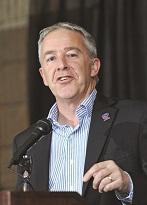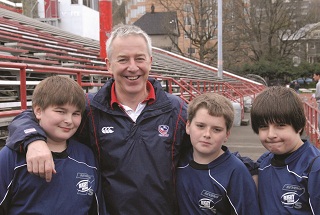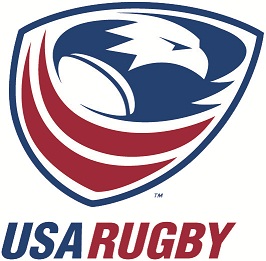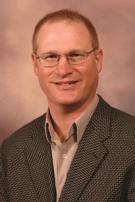
 What is USA Rugby’s goal?
What is USA Rugby’s goal?
We’re the national governing body in the U.S. and a member of the U.S. Olympic Committee and International Rugby Board. USA Rugby is responsible for the promotion and development of the sport in the U.S. and the promotion of U.S international participation. Our mission is to grow a strong foundation for the future and to develop the game in high schools, colleges, and clubs, and to have excellent national teams.
We want to “inspire America to fall in love with rugby.” If people try the game—feel what it’s like to run with the ball, be on attack, be on defense—we know it will be one of the best sports experiences for them.
What are some of the benefits of the sport?
Rugby is a healthy, active game anyone can play, at any level, for the rest of their life. It’s fantastic in terms of skills development and athleticism. Rugby also has a bit of everything in it—from the skills you need in soccer, to basketball, to football and more. And it’s a team sport. Our spirit of the game is all about camaraderie, working with your teammates, loyalty, etc.
How many members does USA Rugby have?
Membership has grown from 50,000 in 2007 to over 115,000 today. We have more than 750,000 kids who aren’t registered but who participate regularly in our school and after-school programs. We developed a non-contact, introductory form called “Rookie Rugby,” which includes flag and touch. We introduce contact gradually.
When we looked at our demographics, we were heavily skewed to men, high school, colleges and seniors, plus, we have over 20,000 women now playing rugby. We believe if we get the ball into the hands of kids at a younger age, we can create players and fans for life.
How many players take the field in a rugby event?
One of our most popular, and growing, formats is seven-a-side, which is played on a full-size field, seven players on each side, playing two seven-minute halves with a two-minute break. It’s fun and fast, with lots of scoring. Teams can play two or three times a day, and generally play five matches in a two-day tournament.
The traditional global game is 15-a-side, with two 40-minutes halves and a 10-minute break. High school, college and senior teams now play both sevens and 15s. Also, we’re an NCAA “emerging sport” for women, and we’re working with a number of colleges to consider implementing women’s rugby as a full varsity sport.
What do you look for in rugby venues?
Soccer fields work well; we just have to put up goalposts. The maximum field size is 70 meters wide by 100 meters long. There are no minimums, so we can play on smaller fields. While natural grass is preferred, we’re finding more tournaments are played on turf fields, as long as the turf complies with international standards.
We have a sevens men’s event in Las Vegas every February as part of a 10-stop world tour, with teams from 16 countries, and recently, we were awarded one of the new women’s international circuit events that will be launched in 2013. And we continue to seek opportunities to host more international events. For larger international events, we’ll use Major League Soccer stadiums or similar venues with 10,000 to 25,000 capacity.
We’re also starting an increasing number of high school state championships for boys and girls in both sevens and 15s. To play sevens, we don’t need lots of fields. Ideally, if we get two or three fields, we can make do quite well.
Rugby will be back in the Olympics in 2016. How will that impact the sport in the U.S.?
Rugby was in the Olympics in 1920 and 1924; in fact, the U.S. won gold. In 2016 in Rio de Janeiro, it will be the sevens format, a 12-team tournament played over two days for men and women. Right now, we’re seeing a lot of growth in sevens, and as the Olympics draw near, we expect to see more sevens events around the country. Already, this Olympics opportunity has opened people's eyes to the sport.


